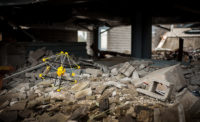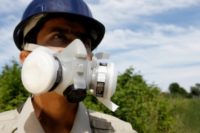 More than seven months after a train derailment and chemical spill forced more than 700 people from their homes in Paulsboro, N.J., the borough remains ill-prepared to respond to a similar or worse accident, officials told federal investigators, according to various news reports.
More than seven months after a train derailment and chemical spill forced more than 700 people from their homes in Paulsboro, N.J., the borough remains ill-prepared to respond to a similar or worse accident, officials told federal investigators, according to various news reports.
Should another evacuation be necessary, they said, Paulsboro would have difficulty transporting many of its 6,100 residents to safety. Many residents do not have cars, and the borough has only two buses to evacuate residents. Neither is handicap-accessible, meaning officials would have to call on other towns or Gloucester County for assistance.
First responders also still lack protective equipment.That lack made them vulnerable to exposure to vinyl chloride during the Nov. 30 derailment. But that may be difficult to remedy. National Transportation Safety Board (NTSB) officials estimated that 25,000 to 30,000 rail cars containing hazardous materials pass through Paulsboro each year. And a respirator that protects against vinyl chloride might not protect against the vast number of other chemicals in transit.
"How many canisters can I afford to buy for how many chemicals that go through?" Paulsboro Fire Chief Alfonso G. Giampola said Tuesday, citing budgetary constraints.
The derailment occurred around 7 a.m. Nov. 30 when a freight train passed through a movable bridge over Mantua Creek. The train came to a red light, signaling that the bridge had not properly locked. The conductor inspected the bridge and determined that it was safe to proceed.
Then four tanker cars fell into the water. One was breached and spewed 20,000 gallons of vinyl chloride gas into the atmosphere.
"Self-policing by the railroads does not get the job done," said U.S. Rep. Robert E. Andrews (D., N.J.),
Andrews' proposal would include funding for hazardous-materials training and equipment, to be paid for by railroads.
Iinvestigators repeatedly asked first responders why they did not wear protective gear even though air monitoring detected unsafe levels of vinyl chloride at the derailment scene.
In addition to that criticism, the NTSB said Wednesday that Paulsboro was supposed to submit to Gloucester County an updated emergency operation plan in July 2010. Neither the county nor the state received a plan for recertification. It was revised after the derailment.
Miscommunication was a key factor in the confusion that followed the derailment of seven cars and the release of toxic vinyl chloride, according to NTSB testimony. First responders, it has been said, were unprepared to deal with the crisis.
The chemical can cause unconsciousness if inhaled in large amounts, or, in worst-case scenarios, death. An estimated 70 people were treated for exposure. Many were first responders who experienced breathing problems, scratchy throats and burning eyes.




